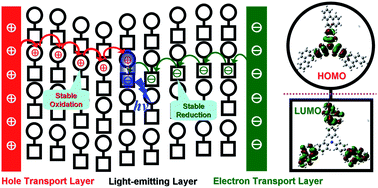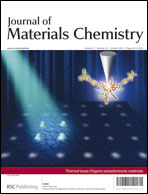To obtain highly efficient and stable blue electroluminescence, two novel star-shaped compounds are purposefully designed and synthesized, which are composed of two functional groups, central triphenylamine (TPA) and peripheral anthracene (AN) or phenanthrene (PA) with obviously segregative electronic density distribution characteristics between the highest occupied molecular orbital and the lowest unoccupied molecular orbital (HOMO and LUMO). As a light-emitting layer, they exhibit not only highly efficient deep-blue electroluminescence, but also good stability in organic light-emitting diodes (OLEDs) due to the combination of several advantageous properties (electrochemical, thermal and morphological stability). In particular, for triphenylamine-cored phenanthrene (TPA-PA), the external quantum efficiency of 7.23% is the best reported result for non-doped deep-blue OLEDs, and the lifetime of the device is also improved, being twice that of 2-methyl-9,10-di(2-naphthyl) anthracene (MADN) under the same device conditions.

You have access to this article
 Please wait while we load your content...
Something went wrong. Try again?
Please wait while we load your content...
Something went wrong. Try again?


 Please wait while we load your content...
Please wait while we load your content...